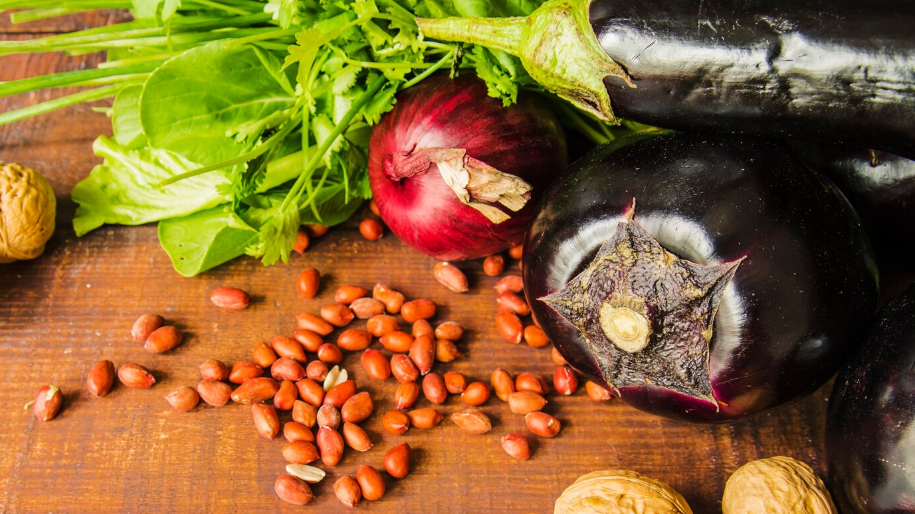Magnesium is a vital mineral that plays a crucial role in various bodily functions, including blood sugar control. This essential nutrient helps regulate insulin production and sensitivity, making it a key factor in maintaining stable blood glucose levels. For individuals managing diabetes or prediabetes, ensuring adequate magnesium intake can significantly support better blood sugar regulation.
This article explores the relationship between magnesium and blood sugar management, the best magnesium-rich foods, and tips for incorporating this mineral into your diet.
How Magnesium Impacts Blood Sugar
1. Enhances Insulin Sensitivity
Magnesium is involved in the process of insulin secretion and action. It helps improve the body’s ability to use insulin effectively, which is essential for moving glucose from the bloodstream into cells for energy. Low magnesium levels have been linked to insulin resistance, a key factor in Type 2 diabetes.
Scientific Insight:
A study published in Diabetes Care found that individuals with higher magnesium intake had a lower risk of developing Type 2 diabetes compared to those with inadequate levels.
2. Reduces Blood Sugar Spikes
Magnesium helps regulate enzymes involved in glucose metabolism, reducing the likelihood of post-meal blood sugar spikes. It also supports the proper functioning of beta cells in the pancreas, which produce insulin.
3. Decreases Inflammation
Chronic inflammation can worsen insulin resistance and blood sugar control. Magnesium has anti-inflammatory properties that can help mitigate these effects, supporting overall metabolic health.
Signs of Magnesium Deficiency
Low magnesium levels are common, particularly in individuals with diabetes or prediabetes. Symptoms of deficiency may include:
- Fatigue and muscle weakness
- Cramping or spasms
- Irregular heartbeat
- Numbness or tingling
- Poor blood sugar control
If you suspect a deficiency, consult a healthcare provider for proper testing and guidance.
Foods Rich in Magnesium for Blood Sugar Management
Incorporating magnesium-rich foods into your diet is one of the best ways to improve blood sugar control naturally. Here are some excellent sources:
- Leafy Greens: Spinach, kale, and Swiss chard are rich in magnesium and low in carbohydrates, making them ideal for diabetes management.
- Nuts and Seeds: Almonds, pumpkin seeds, and sunflower seeds provide magnesium and healthy fats that stabilize blood sugar.
- Whole Grains: Quinoa, brown rice, and oats are magnesium-rich options with a low-to-moderate glycemic index.
- Legumes: Lentils, black beans, and chickpeas are high in magnesium and fiber, promoting steady glucose release.
- Dark Chocolate: Choose unsweetened or low-sugar varieties for a magnesium boost with minimal impact on blood sugar.
- Fatty Fish: Salmon and mackerel are not only rich in omega-3 fatty acids but also contain magnesium.
Magnesium Supplements: Are They Necessary?
While most people can meet their magnesium needs through diet, supplementation may be beneficial for those with a deficiency or difficulty absorbing magnesium. Common forms of magnesium supplements include:
- Magnesium citrate: Easily absorbed and ideal for those with digestive issues.
- Magnesium glycinate: Known for its calming effects and good absorption rate.
- Magnesium oxide: A cost-effective option, though less bioavailable.
Tip: Always consult a healthcare provider before starting magnesium supplements, especially if you’re managing diabetes or taking medications.
Tips for Incorporating Magnesium into Your Diet
- Add Leafy Greens to Meals: Include spinach or kale in salads, soups, or smoothies for a magnesium-rich boost.
- Snack on Nuts and Seeds: Keep almonds or pumpkin seeds on hand for a healthy snack that supports blood sugar control.
- Opt for Whole Grains: Replace refined grains with magnesium-rich alternatives like quinoa or brown rice.
- Include Magnesium-Rich Fish: Add salmon or mackerel to your weekly meal plan for both magnesium and omega-3 benefits.
- Try Dark Chocolate in Moderation: Enjoy a square of dark chocolate (70% cocoa or higher) as a treat that’s good for your health.
The Bottom Line
Magnesium plays a vital role in blood sugar management by enhancing insulin sensitivity, reducing blood sugar spikes, and mitigating inflammation. Ensuring adequate magnesium intake through a balanced diet or supplements can help support better glucose control, especially for individuals managing diabetes or prediabetes.
By incorporating magnesium-rich foods like leafy greens, nuts, seeds, and whole grains into your meals, you can take a natural and effective step toward improved blood sugar regulation.
FAQs
1. How does magnesium help with blood sugar control?
Magnesium improves insulin sensitivity, supports glucose metabolism, and reduces inflammation, all of which contribute to better blood sugar management.
2. What are the best foods for magnesium and blood sugar management?
Foods like spinach, almonds, pumpkin seeds, quinoa, and lentils are rich in magnesium and excellent for stabilizing blood sugar levels.
3. Can magnesium supplements help lower blood sugar?
Magnesium supplements may be beneficial for individuals with a deficiency. Consult a healthcare provider to determine the appropriate dosage and type.
4. Is magnesium deficiency common in people with diabetes?
Yes, magnesium deficiency is more common in individuals with diabetes due to increased urinary excretion of the mineral and its role in insulin regulation.
5. How much magnesium should I consume daily?
The recommended dietary allowance (RDA) for magnesium is 310–420 mg per day for adults, depending on age and sex. Always aim to meet your needs through food first.
